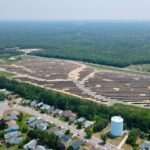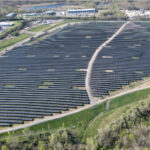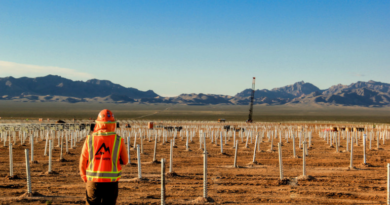Closed landfills in the U.S. could potentially host 63 GW of solar capacity
Some cities, counties and states across America have started converting closed landfills into solar sites to generate clean energy and transform their communities. A RMI new report reveals that the potential for this practice is relatively untapped and could help boost the energy transition around the country.
There are over 10,000 closed landfills in the United States. “The Future of Landfills Is Bright” estimates that 4,312 of these sites alone — those for which adequate data is available — could host at least 63 GW of solar capacity, or the equivalent of 70% of total installed U.S. solar capacity through 2020. If this potential was fully realized, landfill solar installations could produce 83 TWh of clean electricity annually — enough to power 7.8 million homes.
“When I look at a closed landfill, I don’t see an old trash site, I see an opportunity for creative land use,” said Matthew Popkin, manager on RMI’s Urban Transformation team and report co-author. “Using closed landfills to passively generate clean electricity may be their highest and best use. Communities can reinvent these sites with limited reuse potential to advance their clean energy futures — and the benefits don’t stop there.”
In addition to energy generation, RMI’s analysis also examines other benefits landfill solar can provide communities. By repurposing closed landfills for sustainable, non-hazardous uses, state and local governments can advance environmental justice by creating jobs and helping revitalize the lower-income communities where many closed landfills are located.
Currently, landfill solar projects are geographically concentrated in the northeast United States, with almost 75% of operating projects located in Massachusetts, Connecticut, New Jersey and New York. But landfills are everywhere and there is a significant opportunity for cities, counties, and states around the country to expand adoption of this practice and generate multiple benefits for their communities.
For example, the historically neglected, majority-Black Houston neighborhood of Sunnyside will soon be home to the largest landfill solar installation in the nation. A project announced in early 2021 is converting a 240-acre site that has negatively impacted the community for over 80 years into a 52-MW solar farm. Once operational, in late 2022 or early 2023, the site will generate enough clean electricity to power 5,000 homes and offset 120 million pounds of CO2 each year.
“The Future of Landfills Is Bright” outlines how states and local governments can jumpstart landfill solar development by building on previous policies, incentives and best practices from governments that have led the way on landfill solar development.
News item from the Rocky Mountain Institute
<!–
–>
Original Source: https://www.solarpowerworldonline.com/2021/11/rmi-closed-landfills-potential-host-63-gw-solar/













